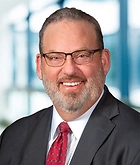Court Strikes Down Key Parts of DOL’s Rule on the Families First Coronavirus Response Act
In response to the COVID-19 pandemic, Congress enacted the Families First Coronavirus Response Act (FFCRA). Read more on the FFCRA in this alert. Broadly speaking, the FFCRA obligates employers to provide paid sick leave to employees who are unable to work for the following six enumerated reasons related to the COVID-19 pandemic:
- Employee is subject to a Federal, State, or local quarantine or isolation order related to COVID-19;
- Employee has been advised by a health care provider to self-quarantine related to COVID-19;
- Employee is experiencing COVID-19 symptoms and is seeking a medical diagnosis;
- Employee is caring for an individual subject to an order described in (1) or self-quarantine as described in (2);
- Employee is caring for a child whose school or place of care is closed (or child care provider is unavailable) for reasons related to COVID-19; or
- Employee is experiencing any other substantially-similar condition specified by the Secretary of Health and Human Services, in consultation with the Secretaries of Labor and Treasury.
The FFCRA also requires partially paid emergency family leave for employees caring for a child whose school or place of care is closed (or the child care provider is unavailable) for reasons related to COVID-19 (reason 5 above). These requirements are mandated by the Emergency Paid Sick Leave Act (EPSLA) and the Emergency Family and Medical Leave Expansion Act (EFMLEA) contained within the FFCRA.
In April, the Department of Labor (DOL) promulgated its Final Rule implementing the FFCRA. Both the law and Final Rule require employers with fewer than 500 employees to provide two weeks of paid sick leave to employees unable to work due to the virus, and up to 10 weeks of partially paid leave under EFMLEA to care for a child whose school or day care is closed because of the pandemic.
The State of New York sued the DOL claiming that the portions of the Final Rule violated the FFCRA by unduly restricting the statute’s intended coverage. Specifically, lawsuit attacked the following requirements contained in the Final Rule: the “work-availability” requirement; the definition of “health care provider”; the requirement that an employee secure employer consent for intermittent leave; and the requirement that documentation be provided before taking leave. On August 3, 2020, in State of New York v. Department of Labor, the U.S. District Court for the Southern District of New York ruled in favor of the State and vacated these requirements.
The Work Availability Requirement
The Final Rule provides that employees are not entitled to any EFMLEA leave, and are not entitled to EPSL for reasons 1, 4, and 5 of the EPSL eligibility, if their employer “does not have work” for them. The Final Rule reasoned that if work is not available, the employee is not unable to work because of the enumerated FFCRA COVID-19 circumstances. The court found that “the limitation is hugely consequential for the employees and employers covered by the FFCRA, because the COVID-19 crisis has occasioned the temporary shutdown and slowdown of countless businesses nationwide, causing in turn a decrease in work immediately available for employees who otherwise remain formally employed. The work-availability requirement may therefore greatly affect the breadth of the statutory leave entitlements.”
The court then rejected the DOL’s interpretation of the FFCRA. With respect to EPSL, denying leave for three of the six reasons simply because there is a lack of available work “is entirely unreasoned” and “manifestly contrary to the statute’s language.” Further, the DOL’s “barebones explanation for the work-availability requirement is patently deficient,” fails to show “reasoned decision-making,” and was just a “terse, circular regurgitation of the requirement.”
This means that the availability of work is no longer relevant to eligibility for FFCRA leave. As long as the individual remains an employee and meets the requirements for EPSL or EFMLEA, they will be entitled to take FFCRA leave.
Definition of “Health Care Provider”
The FFCRA permits employers to exclude “health care providers” from the law’s paid leave requirements. The FFCRA adopted the definition of “health care provider” from the Family and Medical Leave Act, and authorized the DOL to further define the term. Under the FMLA, a “health care provider” is “a doctor of medicine or osteopathy who is authorized to practice medicine or surgery” or “any other person determined by the Secretary [of Labor] to be capable of providing health care services.” The breadth of that term, the court noted, “has grave consequences for employees.”
In its Final Rule, the DOL adopted an expansive definition of “health care provider” that included every employee of an organization that provides health care services, as well as employees of health care suppliers and contractors. In fact, the Court noted, “DOL concede[d] that an English professor, librarian, or cafeteria manager at a university with a medical school would all be ‘health care providers’ under the Rule.”
The Court rejected this interpretation as “vastly overbroad,” as it included individuals “whose roles bear no nexus whatsoever to the provision of healthcare services.” Instead, the court explained, the focus should be on the employee’s duties, not the employer’s identity.
Intermittent Leave
The Final Rule permits employees to take EPSL or EFMLEA intermittently in separate periods of time only if the employer and employee agree, and only for certain qualifying conditions. The court upheld that part of the Final Rule which prohibits intermittent leave when conditions “logically correlate with a higher risk of viral infection” (i.e., an infected employee need not be permitted to return to work intermittently as this would likely transmit the virus).
However, the court rejected the DOL’s requirement that intermittent leave in other situations may only occur with employer approval, finding that this restriction was “entirely unreasoned.” This means that, in most cases when there is no risk of the employee transmitting the virus in the workplace, employer approval is no longer required before an employee takes leave intermittently.
Documentation Requirements
The Final Rule requires that employees submit to their employer, “prior to taking [FFCRA] leave,” documentation indicating their reason for leave, the duration of the requested leave, and, when relevant, the authority for the isolation or quarantine order qualifying them for leave. The Court found that this prior notice requirement was inconsistent with the FFCRA itself. The FFCRA permits employees to give notice of the need for emergency paid family leave as soon “as is practicable.” And with respect to paid sick leave, an employee may be required to follow the employer’s reasonable notice procedures “after the first workday (or portion thereof) an employee receives paid sick time.” The Final Rule’s documentation requirement “imposes a different and more stringent precondition to leave” than the FFCRA’s notice requirements, and, therefore, “cannot stand.”
This means that, if the need for leave is foreseeable, notice and documentation can be required in advance. Otherwise, both the notice and the documentation may be submitted after the employee begins leave.
Conclusion
The court’s ruling raises several questions. Is the decision effective nationwide or only within the confines of the Southern District of New York where the court sits? Now that the Final Rule has been vacated, are employers liable for leave denials and, if so, does that liability extend back to April when the Final Rule was implemented or to August 3 when the court ruled? Will the DOL appeal the decision to the U.S. Court of Appeals for the Second Circuit and, if so, will that Court reinstate the Final Rule? Will the DOL issue another rule?
Employers who are covered by the FFCRA should consult with counsel concerning compliance with the FFCRA’s leave mandates. Employers should also note that several of the DOL’s published questions and answers on the FFCRA are no longer valid. Contact your Vorys lawyer if you have questions about the FFCRA or other COVID-related issues facing your business.
--
Vorys COVID-19 Task Force
Employers continue to face myriad issues as COVID-19 continues to spread and impact communities and workplaces (some of these issues are addressed in our prior alerts located here). We will continue to keep you posted on any important developments. In the meantime, if you have any questions regarding this new law or any other aspect of COVID-19, please contact your Vorys lawyer.
We have also established a comprehensive Coronavirus Task Force, which includes attorneys with deep experience in the niche disciplines that we have been and expect to continue receiving questions regarding coronavirus. Learn more and see the latest updates from the task force at vorys.com/coronavirus.



